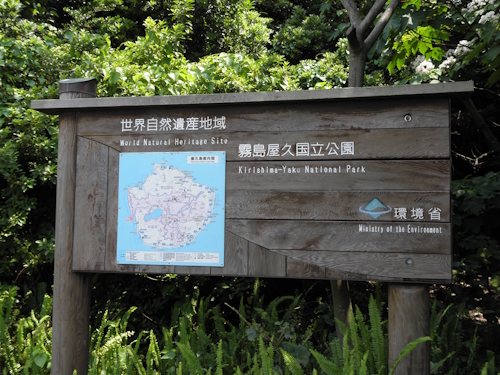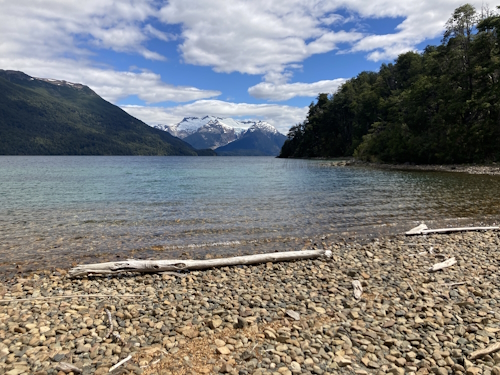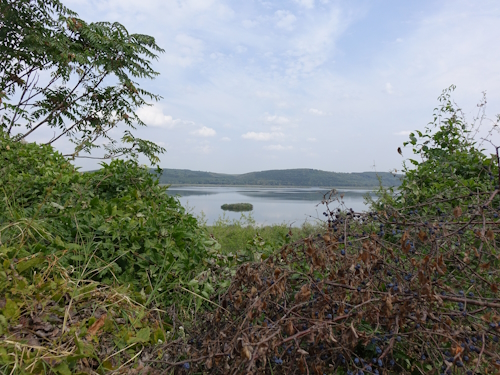Blog Connections
Strict Nature Reserves
While preparing for my upcoming trip to Kazakhstan I found out that both parks that together form the Saryarka WHS are ‘Strict Nature Reserves’. We already have a connection for that (of course), and I took the opportunity to refresh it. I had always thought that these Strict Reserves wouldn't allow for tourist visits (we had that in our connection description as well: "a zone with the highest wilderness protection and not open to tourism"), but it turns out that the story is different.

What is meant by “Strict”?
IUCN over the years has developed a system to categorize protected areas – the most recent incarnation dates from 1994. It is meant to provide international standards and is used locally to provide a basis for legislation. This system ranks from high to lower levels of protection, represented by categories I to VI with I being the highest. See this source for how it works, the quotes below were taken from this document.
The Strict Nature Reserve is category Ia. Here, “human visitation, use and impacts are strictly controlled and limited to ensure protection of the conservation values”. The reserves protect natural features “that will not survive outside of such strictly protected settings” and can be studied in near-pristine circumstances. They are “managed for relatively low visitation by humans”.
There’s also a category Ib, “Wilderness Area”, which also doesn’t survive on tourism revenue. They are larger and less strictly protected from human visitation than category Ia. I think we can have a separate connection for them too. I’ve found a few WHS already: Shirakami-Sanchi, Barrington Tops National Park (Gondwana Rainforests), Tatshenshini-Alsek Provincial Park & Wrangell–Saint Elias Wilderness, and some of the Cold Winter Deserts of Turan.

Updates
I verified our connected sites by checking their IUCN category status (mostly via the UNEP-WCMC website). We lost Thungyai-Huai Kha Khaeng there. Also, Białowieża Forest doesn't seem to be one (according to this statistic, Poland has no Ia sites) although it includes an area named "Special Reserve". I also removed the Sichuan Giant Panda Sanctuaries as the status of the part that could be (Wolong Natural Nature Reserve) is unsure.
I added the following new sites that I got from doing a query on the UNESCO website and drawing inspiration from the No Road Access and Not open to tourists connections:
- Los Alerces (photo 2)
- Heard and McDonald Islands
- West Norwegian Fjords (partly: a few small reserves)
- Pantanal (partly: the private reserves)
- Surtsey
Ones that did not meet the cut where I perhaps expected it: Shirakami-Sanchi (it's Ib), Central Amazon and Lorentz NP (both reclassified to category II, a National Park), and Chiribiquete ('only' a National Park as well - its strict access rules may be more safety-based than conservation-based). The latter 3 are too vast - a common denominator among Ia sites is that they are fairly small.
A mixed bunch
The resulting list of 20 connected WHS is a mixed bunch. My main conclusion is that very few WHS are made up of a Strict Nature Reserve only. In most cases, and especially with serial sites, there are both strict and less strict parts.
Fully covered are:
- Heard and McDonald Islands
- Aldabra
- Gough & Inaccessible Islands
- Mt. Nimba
- Saryarka
- Srebarna (Photo 3)
- Sundarbans NP
- Surtsey

Consequences for accessibility
So in most cases you can just visit another location to avoid the conditions of the Strict area. And even among those that a Strict Reserve fully covers, none of the WHS is inaccessible to the general public. There are few restrictions at Yakushima (Photo 1) and Saryarka. Others may be expensive (Aldabra, Gough, Heard and McDonald), dependent on good weather conditions for landing, or you need a (hiking or climbing) permit - but you can get there in the end. Even entering the core zone of the Indian Sundarbans seems a possibility nowadays - at "Nethi Dhupani island located in the Western range of the National Park where regulated tourism (13 boats per day) is permitted" (IUCN Outlook 2020) and you can loop around Surtsey (in its marine part) by boat.
If you know of additional Ia or Ib category sites, or special requirements for getting into them, please let us know
Els - 12 May 2024
Comments
Els Slots 12 May 2024
I register them in the same connection with the note "Partly", Carlo. Thanks for the research!
Carlo Sarion 12 May 2024
You may add Hubei Shennongjia and Archipiélago de Revillagigedo too:
http://world-heritage-datasheets.unep-wcmc.org/datasheet/output/site/hubei-shennongjia/
http://world-heritage-datasheets.unep-wcmc.org/datasheet/output/site/archipielago-de-revillagigedo/
My partner went on a diving trip in Socorro in Revillagigedo and yes, it's pretty much highly restricted.
The following sites on the other hand have components whose IUCN designation is either 1a or 1b. I don't know how you would consider this under the Strict Nature Reserve connection though.
1. Xianjiang Tianshan - 1b Tomur Peak National Nature Reserve, West Tianshan Mountains National Nature Reserve, and Bayinbuluke National Nature Reserve
2. Western Tien-Shan - 1a for Aksu-Jabagly State Nature Reserve and Besh-Aral State Nature Reserve
3. Western Caucases - 1a for Kavkazskiy State Biosphere Reserve
4. Virgin Komi Forest - 1a for Pechoro-Ilychsky Reserve
5. Tsingy de Bemaraha Strict Nature Reserve - 1a for Tsingy de Bemaraha Strict Nature Reserve (not the national park)
6. Shiretoko - 1a for Onnebutsedake Wilderness Area
7. Laponian Area - 1a for Sjaunja Nature Reserve
8. Kluane / Wrangell-St Elias / Glacier Bay /tatshenshini-Alsek - 1b for Tatshenshini-Alsek Provincial Park
9. Central Sikhote-Alin - 1a for Sikhote-Alinskiy Nature Preserve (Zapovednik)
10. Banc d'Arguin National Park - 1a for Cap Blanc Integral Reserve
Els Slots 12 May 2024
I also found Putorana and Wrangel Island to be Ia (from the less than 1,000 visitors a year connection).
Els Slots 12 May 2024
You're totally right Carlo. I should have known about the Subantarctic Islands. Their 'Australian brother' Macquarie island is Ia as well. Will add them.
Carlo Sarion 12 May 2024
I just reviewed a couple of sites inscribed under natural criteria so this topic just looks so timely! This is interesting, countries have their own categories of conservation and resource use and do not necessarily adopt the IUCN protected area management classification system. The IUCN system does not also automatically fit for marine protected areas (MPAs) because of the nuanced issues in the marine environment, though I learned somewhere that they are actually applicable and helpful in creating legislative and operational settings in the establishment of MPAs (need to find that document somewhere). Anyway, in the case of nature reserves that form the NZ Sub-Antarctic Islands, I believe they are categorised under 1a:
http://world-heritage-datasheets.unep-wcmc.org/datasheet/output/site/new-zealand-sub-antarctic-islands